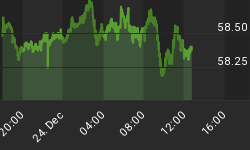Central Banks around the world have been under pressure to cover shortfalls in fiscal policy. At his monthly press conference, European Central Bank (ECB) President Mario Draghi stuck to his guns, telling politicians to focus on structural reforms to stimulate growth, rather than raising hopes for more easy money from the ECB. Interest rates remain at 1%; the euro reacted positively to Draghi's comments.
Read past Merk Insights
Pointing to the experience of how stagflation in the 1970s was overcome, Draghi points out structural reform, not increased spending, is the the proper course of action. Specifically, Draghi calls for: fiscal balances, fiscal stability and competitiveness. Having said that, the prepared introductory statement of the press conference mentions "growth" 13 times, stressing that "growth and growth potential in the euro area need to be enhanced by decisive structural reforms. In this context, facilitating entrepreneurial activities, the start-up of new firms and job creation is crucial. Policies aimed at enhancing competition in product markets and increasing the wage and employment adjustment capacity of firms will foster innovation, promote job creation and boost longer-term growth prospects. Reforms in these areas are particularly important for countries which have suffered significant losses in cost competitiveness and need to stimulate productivity and improve trade performance."
Draghi also calls for a vision of how the Eurozone ought to look in a decade, so that such vision can be implemented. A fiscal compact, not a "transfer union" is the appropriate starting point of how fiscal sovereignty can be delegated over time to a central Eurozone authority. The press conference was ahead of this weekend's national elections in France and Greece, as well as regional elections in Germany.
In our assessment, austerity is the easy part, structural reform is the tough part. With regard to monetary policy, Draghi was notably light. He shed cold water on the notion of re-activating the peripheral bond purchase program (Securities Markets Program, SMP). He also dampened expectations of a rate cut by emphasizing balanced inflation risks, as well as a gradual economic recovery, albeit with downside risks. He suggested the European banking sector is improving, not only visible in reduced intra-bank refinancing (repo) rates, but also apparent in an increase of the deposit base in peripheral Eurozone countries.
Curiously, just about all actions suggested by Draghi are really outside of the purview of the ECB. We may want to add a comment recently made by Bundesbank President Jens Weidmann: the higher cost of borrowing can also been seen as an encouragement to engage in reform. It appears that the ECB is in line with our view that the one language policy makers listen to is that of the bond market.
Please sign up for our newsletter to be informed as we discuss global dynamics and their impact on currencies.
















